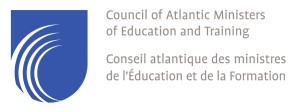
TOOLKIT FOR
POST-SECONDARY
STUDENTS
Use a range of sources to gather, evaluate, organize and effectively use information to solve problems.
You can demonstrate your problem solving through:
- Understanding that problems may be simple or complex
- Determining the specific problem that you need to solve
- Exploring and integrating various sources of information (e.g., people, online, your past experience) to identify possible solutions, taking into consideration multiple perspectives
- Analyzing information to assess its credibility and accuracy
- Examining the pros, cons, ethics and impact on others of potential solutions
- Trying out solutions; reflecting on how they work and how your approach might be improved next time
- Applying learning from one situation to other situations
Selena has almost completed the coursework for her bachelor’s degree in social work. Generally, Selena welcomes group projects; however, for the first time in 4 years, the group she has been placed in for her final assignment just isn’t working out. The other members of her group all seem to have good reasons for not being able to do their part.
Together, the group has discussed several possibilities including submitting the project late (which would result in an automatic loss of grades), submitting an incomplete project on time, or having Selena do almost all of the work. None of these seem like great options.
Selena approaches the instructor to explain the situation and suggest a few possible ways forward. If an extension is not possible, Selena has decided to ask if she could submit an independent assignment or supplement the group assignment. If the instructor does not agree, she has decided to do the best she can to move the group project forward on schedule, recognizing that not all problems have perfect solutions.






